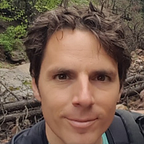Getting Better On Digital Video
There’s something that happens to us when the camera rolls. We become not ourselves. That’s okay for a select few, those who are the naturals, the people you look at with some envy, figuring they’re just good at acting, improvising, speaking in public. They rise to the moment of being on video.
For most of us, we either think we’re good, or know we’re not. It takes work. Part of the great mythology of digital video is that it’s easy. It might be simple, compared to traditional production. But it’s not easy. Because one of the great challenges of communicating in any medium very much exists for digital video.
You’re talking to an audience you can’t see.
That audience matters. Digital video is everywhere you look, and you’re probably using it- or wanting to use it- in more ways than you ever imagined it. Video ads and social, for sure. But also landing pages and product overviews, sales emails, customer support, onboarding, training and hiring. This is Hall of Famer is really purposeful digital video. But so is this.
Video that works- that has the effect on its audience that you want it to- begins with people who are comfortable, confident and effective communicators. The good news: people can get better on video.
Ryan Carey and I met at Google’s glittering San Francisco office, sitting in a cafeteria booth overlooking the Bay Bridge. I was still doing my thing is a YouTube strategist for big advertisers. He’d already left the comfort of our ivory tower at the epicenter of all things digital video for the the cold world of life as a video maker. I was jealous. We stayed in touch, and he reported from the street what it was like to actually help people make more video. Meanwhile I heard some of the same themes over and over from our partners at YouTube.
Basically the big production mindset that leads to Leaderboard-quality doesn’t lend itself to accessible communications that anyone can create. Company leaders couldn’t imagine using their real people in digital video content despite us teasing them with hours of content from YouTube’s infamous roster of native creators. Making your own digital video was someone else’s thing. When I eventually left YouTube last summer, I got hands-on as a video marketing service provider, quickly finding myself down some of the same production rabbit holes that I would have cautioned against earlier. It was exhilarating but it wasn’t a business yet. Ryan and I and asked ourselves, ‘What’s missing?’
It’s people. People not just being willing to be on camera - definitely a known issue - but people who are also good at it. We realized there was a need for a service much like Ryan had already been doing for several years, helping people get ready to be better.
Today we’re launching BetterOn. At the core, it’s a service that pairs our growing roster of amazing video trainers with you and your team for customized video training, over the web or in person, designed to help you make video more effectively. You can check it out here and hit us up for Level 1 (which is free) or ask about starting 1:1 training.
We’re adding more- especially trainers and services- to BetterOn, but we also know what we don’t know. What happens when a lot more of us know how to be our better selves on video, confidently and fearlessly? I’ll let you know when I’m done with my training and hopefully you will too.
